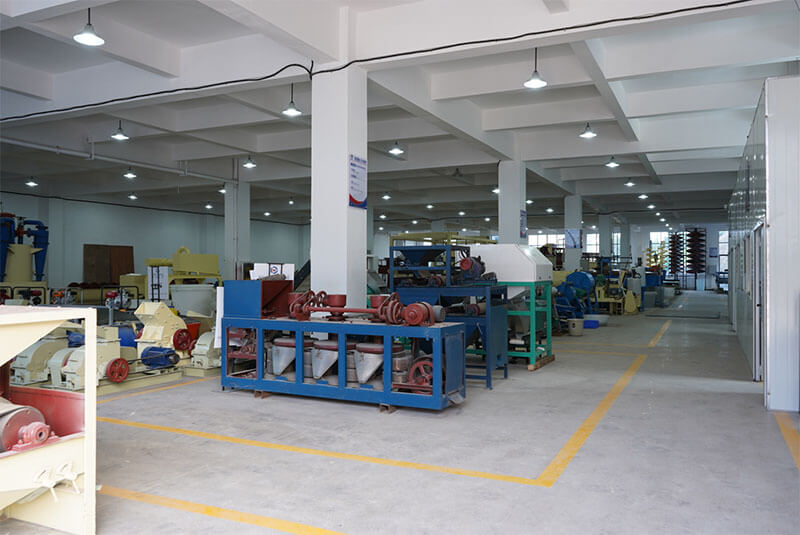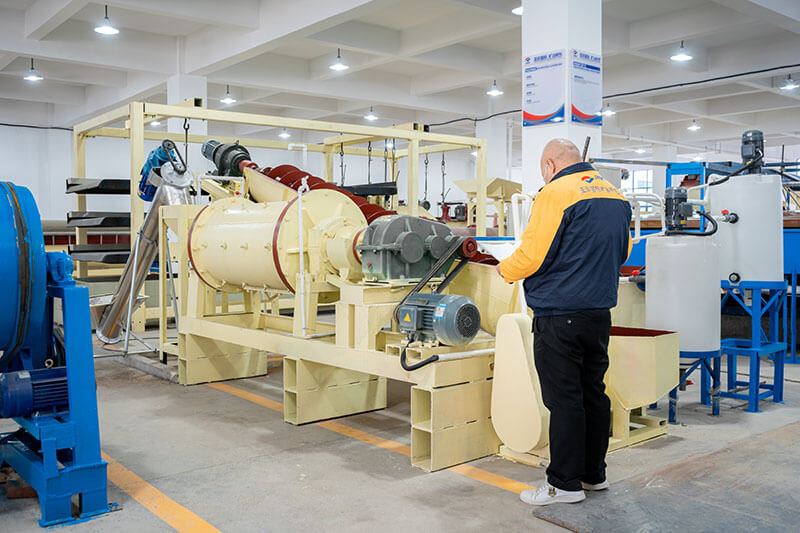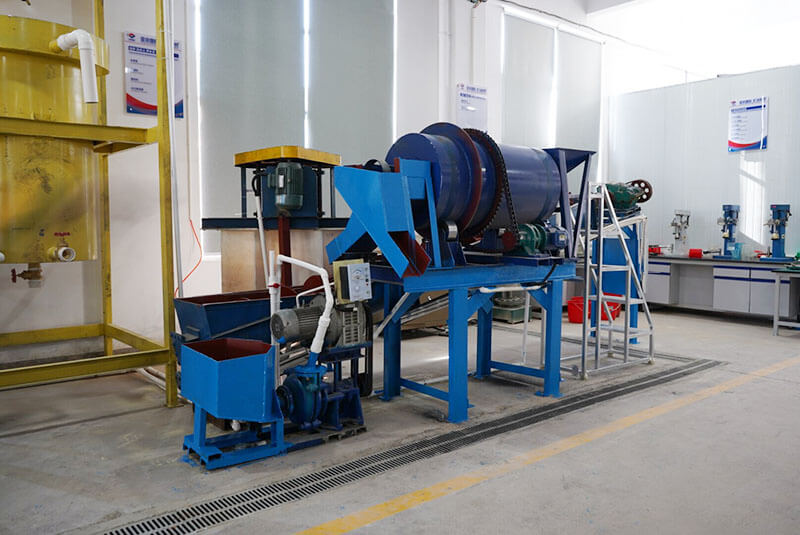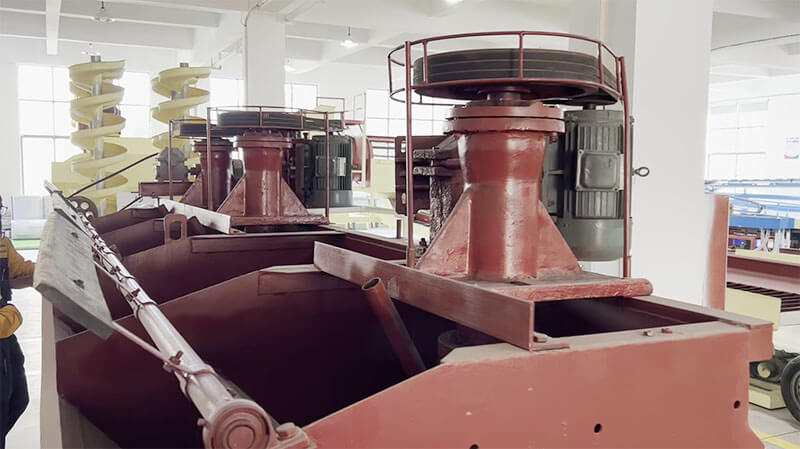The laboratory disc vacuum filter is widely used in geological, metallurgical, coal, building materials, mining, and other scientific research experimental units. It is suitable for carrying out mineral processing experiments.
This machine is the solid-liquid separation equipment for dehydration after flotation, gravity, magnetic separation, and other operations. The equipment mainly consists of a chassis, vacuum pump, filter disc, suction cup, electrical appliances, connecting pipes, etc. Fix two filter discs with different capacities on the chassis and pour slurry directly into the corresponding discs for filtration. This machine has a beautiful appearance, convenient operation, stability, good filtration efficiency. It is suitable for filtering difficult-to-filter minerals and low-solubility slurry.
Application
- This machine is a type of laboratory intermittent or continuous filtration equipment. It is suitable for laboratories and factories in mineral processing, metallurgy, geology, chemical engineering, building materials, petroleum, papermaking, departments, etc. This equipment is for product dehydration and solid-liquid phase separation.
- This equipment has the advantages of simple structure, convenient operation, maintenance, stable operating performance, high filtration efficiency, and multiple uses. It is particularly effective for difficult-to-filter minerals and low-concentration slurry.
Working Principle
Introduction to Structure and Working Principles
This equipment consists of a chassis, a small filter plate, a suction cup and drainage pipeline, a water supply pipeline, a mobile filter plate, electrical appliances, a vacuum pump, a tank, and other parts.
- This equipment utilizes the negative pressure from the suspension water-ring vacuum pump to filter the slurry. It continuously sucks and discharges the filtered liquid. The 1.5kw electric motor drives the vacuum pump and generates a negative pressure of 560-650 columns during operation (at an altitude of 0).
- The filtration system consists of large and small filter discs, drainage pipelines, mobile filter discs, vacuum tanks, and vacuum meters. Connect these components directly to the negative pressure area of the vacuum pump, eliminating the need for a complete set of devices such as gas water separation.
- When working, there is no need to stop. The filtrate is directly pumped out by the vacuum pump, thereby improving filtration efficiency, reducing the number of stops and starts, reducing faults, and extending the service life of the equipment. This machine usually works with other lab machines together.
Filtering principle
Within 10 seconds of starting the vacuum pump. Extract the vacuum negative pressure tank into a negative pressure chamber bigger than 91.2 kPa (684 millimeters of mercury). Then, under the electromagnetic valve of 3-5, quickly pass through the filter paper under the pressure difference, achieving the purpose of dehydration.
3. Structural features
This machine has a simple and compact structure, reliable vacuum system operation, and high vacuum degree. To prevent the liquid in the vacuum negative pressure tank from entering the vacuum pump, upper and lower contacts are set inside the device. When the liquid reaches the predetermined height, the vacuum pump will stop immediately, and open the open-air solenoid valve to start automatically after the discharging liquid.
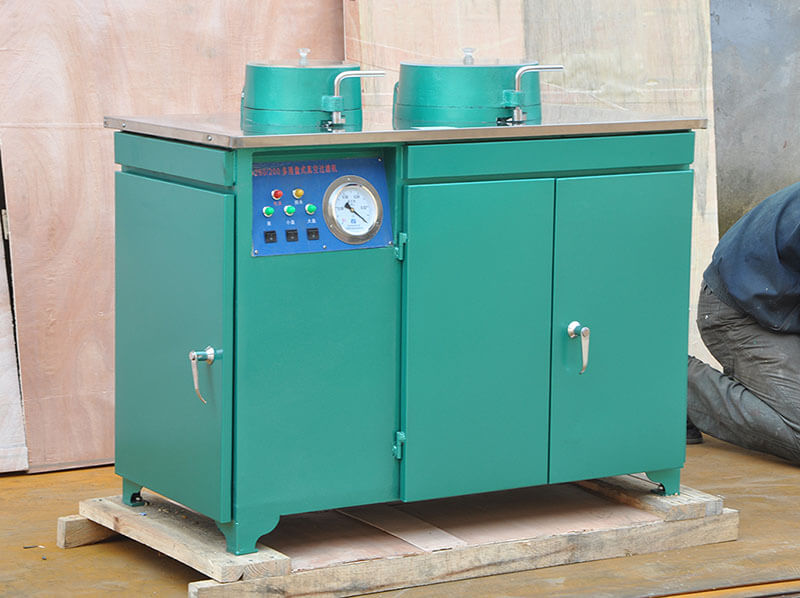
Installation And Maintenance
- Installation
- After unpacking the equipment, remove the packaging grease and check whether all fasteners, instruments, switches, and connectors are loose or detached. Connect the power and ground protection.
- Open the valve of the water supply pipeline and continuously supply an appropriate amount of water to the vacuum pump, ensuring the formation of the necessary water ring for vacuum pumping and achieving the purpose of cooling.
- It is advisable to run it for no more than 10 minutes each time to ensure the performance and safety of the pump. If it needs to be reused, replace the circulating water to ensure that the water temperature does not exceed 30 ℃ (note: if the amount of water added is too small, it will not form a water ring and cannot reach the calibrated vacuum degree. If the amount of water is too large, it will increase unnecessary water consumption and motor power consumption, and emit harsh noise).
- Operation
- Before driving, open one of the valves on the large and small filter plates move the suction filter plate, and close the other two.
- Test drive. If there is a screaming sound, you should adjust the amount of water until there is no strange sound. After that, close the opened filter valve and observe the vacuum gauge pointer. After reaching the calibration value, the machine will get back to normal.
- When using a fixed filter plate to filter materials, it should lock the filter plate, and add a small amount of water to wet the filter cloth and filter paper put on the plate. Then, pour the slurry into the filter plate, and open the valve of the filter plate to interrupt or continuously perform work. If using a mobile suction tray for suction, attach the filter cloth and filter paper to the surface of the external suction tray. Then place them in the upper part of the slurry. Open the valve to extract clear water.
- To prevent the backflow of water into the vacuum system during shutdown, close the valve first, and then stop the pump.
- Maintenance
- After completing the work, if it is not used temporarily for 1-2 days, it must open the screw plug below the pump cover, drain the accumulated water in the pump, and then stop the pump. It must tighten the screw plug during use.
- After a prolonged shutdown, and before restarting, it should remove the motor protective cover, and manually rotate the motor fan blades to allow for flexible rotation before starting.
- When using this device while in motion, should make sure to place the power and grounding wires properly to ensure personal and equipment safety.
JXSC lab mineral processing equipment manufacturer has more than 38 years of experience in mining processing. We provide various lab mining equipment including gravity-separating equipment for processing minerals such as gold, tin, tungsten, lead, zinc, tantalum, niobium, iron, manganese, silver, titanium-iron, etc. Lab machines include laboratory jaw crusher, hammer crusher, roller crusher, grinding equipment, lab gravity separator, screening, washing equipment, etc. Welcome to consult!

